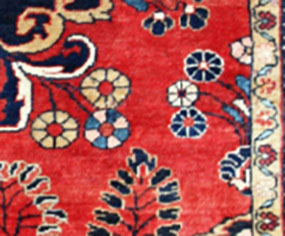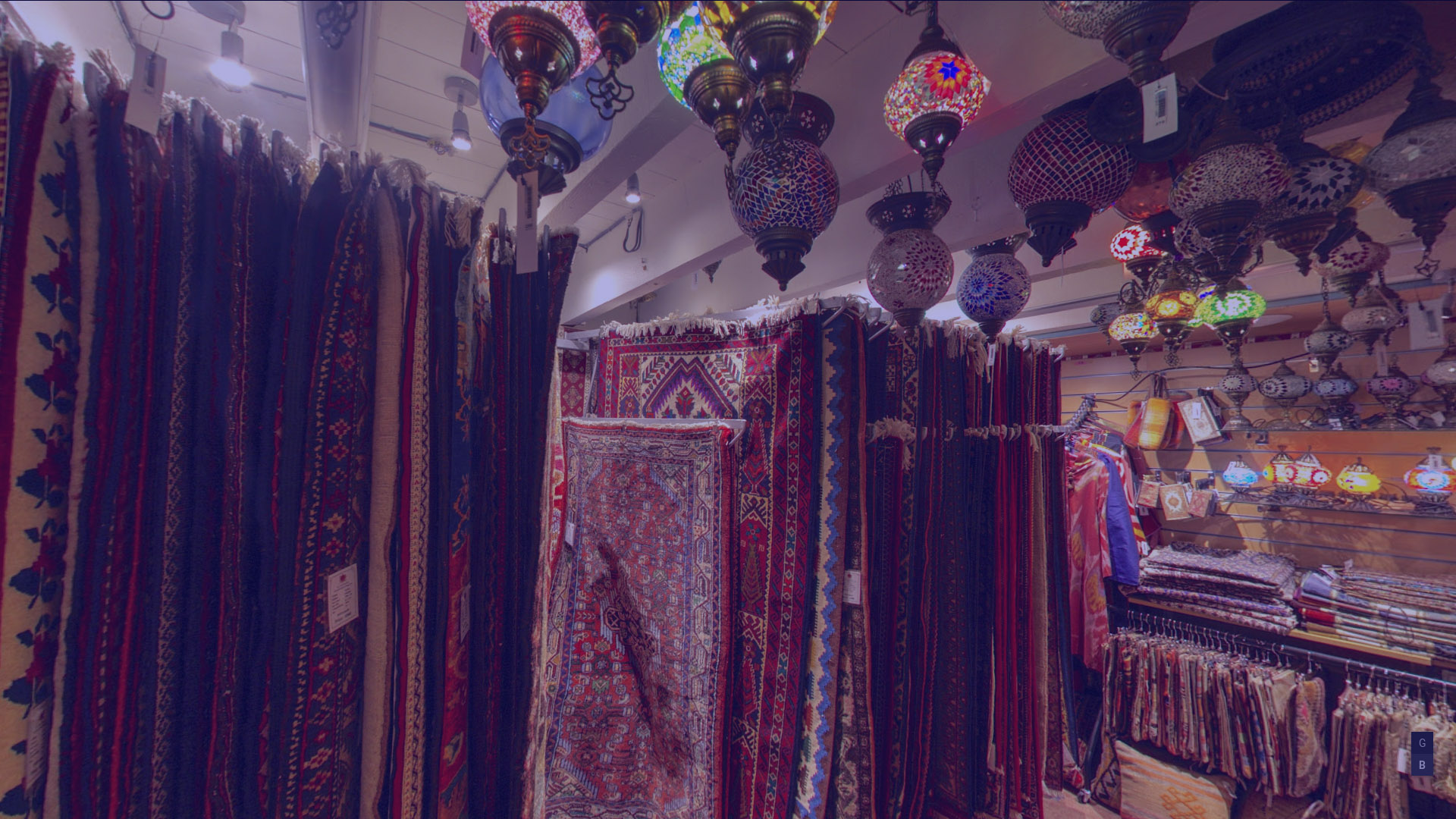
The Language of Motifs
M
otifs come from a deeply rooted tradition that allows isolated or wandering peoples to stick to their identity. The strength of the symbol/motif does not originate from its meaning. The language of motifs cannot be translated into words, because they express the inexpressible.Motif symbolism can be divided into three main groups:
Fertility: This expresses the need for food. Tribes depend on the abundance of crops and the fertility of Mother Earth for their survival.
Fecundity: This includes love, marriage, childbirth, sex, and procreation.
Protection: This is about protecting the fragile balance of life, fate, illness and natural disasters, against which man can do nothing but ask for protection.
The carpets made by nomads reflect their feelings, thoughts and life experience. Carpets are not simply textile products; they have a life inherited from their weaver. When people have social limitations, they try to find motifs and symbols to express their feelings.
Fertility: This expresses the need for food. Tribes depend on the abundance of crops and the fertility of Mother Earth for their survival.
Fecundity: This includes love, marriage, childbirth, sex, and procreation.
Protection: This is about protecting the fragile balance of life, fate, illness and natural disasters, against which man can do nothing but ask for protection.
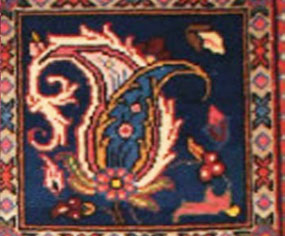
Boteh
Variously interpreted as a leaf, flame, pear, almond or pine cone (among others), this symbol represents fertility or fecundity. A larger boteh encapsulating a smaller one represents a mother and child.
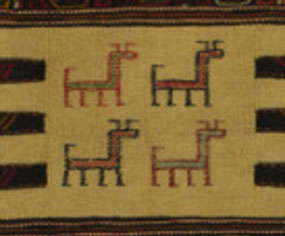
Male/Female Imagery
Animals woven in alternating light (male) and dark (female) colours are among many examples of male/female motifs – similar to the Chinese ying/yang concept.
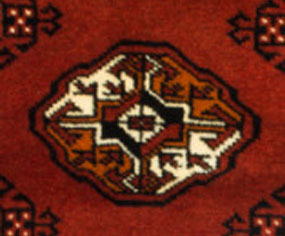
Gol/Gul
Translating from the Persian word for ‘flower’ or ‘rose’ a gol (or gul) motif is used by Turkmen tribes as an identity symbol, similar to the crest or coat of arms used by Europeans.
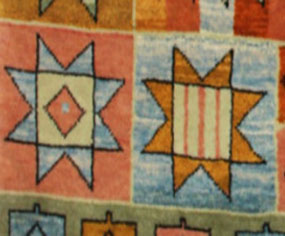
Eight-pointed star
The eight-pointed star is an ancient spiritual symbol, representing happiness, fertility and masculinity.
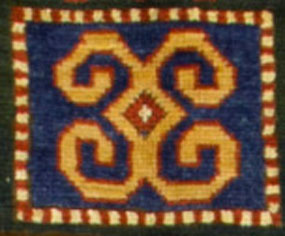
Scorpion
This abstract symbol, sometimes also a triangle with a scorpion-like tail protruding from the top, offers protection against scorpions, which are a frequent threat in nomadic encampments. This also symbolises courage.
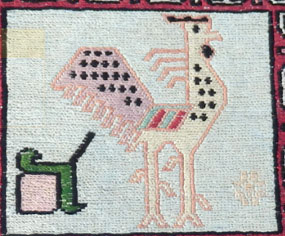
Peacock
The peacock symbolises immortality and divine protection. It is thus associated with paradise.
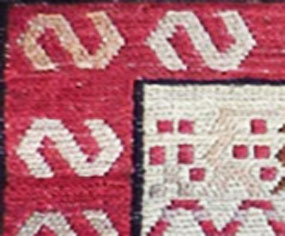
“S” repeated motif
A common protective symbol, the origin of this motif is unknown; it is variously thought to be a stylised dragon or snake or part of a rotating solar cross, among other interpretations.
